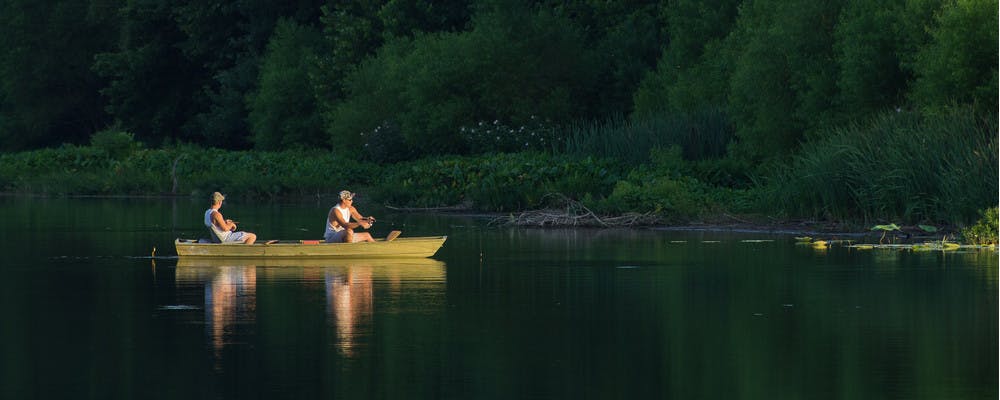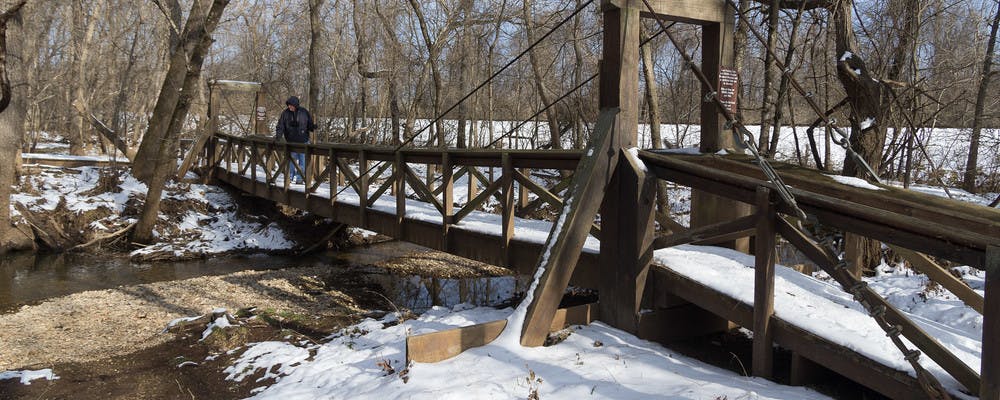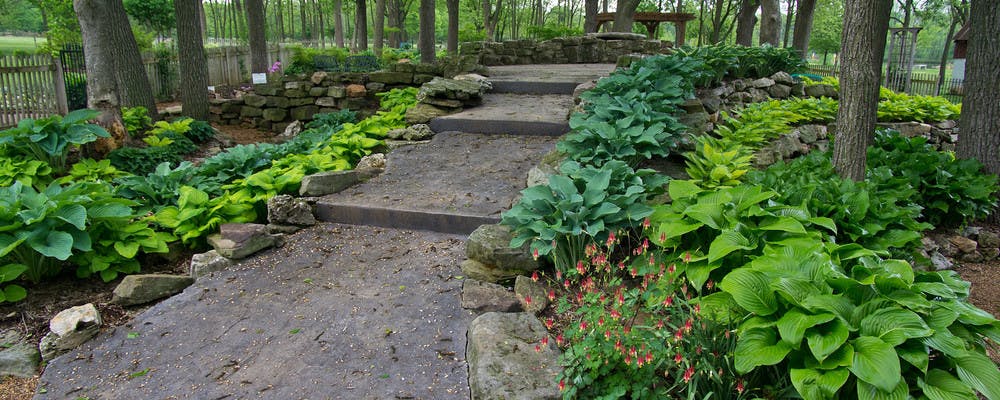If you spend 35 years in one place, you get to know it pretty well. I’ve been a resident of Springfield, Missouri since the early ’80s, and I know first-hand what makes this bustling city of around 162,000 a great place to live and a must to visit—the outdoors is a perfect example.
Ozark Greenways

Joggers enjoy one of the many Ozark Greenways trails.
Established in 1991 as a non-profit, volunteer organization, Ozark Greenways began with the mission of establishing 100 miles of greenway trails around the town and supporting development of inner city on-street bike routes, all for the purpose of maintaining and improving our community’s quality of life. Embraced and supported by the populace, the system of maintained greenways that follow natural streams, abandoned railroad beds and other available rights-of-way virtually surrounds the greater metro area, connecting hikers, bikers, runners and skaters on accessible trails to many of the city’s outstanding parks and public-use features. The public-private partnership of Ozark Greenway’s dedicated volunteer force with the city’s urban planning staff has become a model of success that many other small to mid-size cities are now hoping to emulate.
Lake Springfield Park

Fishermen on Lake Springfield.
The expanding network of trails has established non-motorized links among several of our most attractive outdoor destinations, including Lake Springfield Park, Boathouse and Marina. Located on the city’s southern edge and accessible by the Galloway Creek and James River Greenways, this popular lakeside park includes day-use canoe and kayak rentals, shoreline fishing, and numerous sites for family and group gatherings. We’ve picnicked there often, and I’ve always enjoyed taking the grandkids for an easy walk along the scenic shoreline trail to catch a glimpse of otters, muskrats or other aquatic wildlife. I’m not alone—I often see families doing the same thing. In fact, livability.com named Springfield “America’s Number One Best Place to Retire” in 2014. For birders, the Greater Ozarks Audubon Trail is specifically designed for enhanced bird watching, while paddlers can explore the 4.5-mile James River Linear Park Water Trail.
Springfield Conservation Nature Center

The Springfield Conservation Nature Center is beautiful anytime of year.
Operated by the Missouri Department of Conservation and trail-connected via the Galloway Creek Greenway, the Springfield Conservation Nature Center is another popular haven for nature lovers. In addition to public programs and various special events, the MDC maintains an indoor, self-guided exhibit that offers an excellent, multimedia preview of what you’re likely to experience walking through the center’s 79 acres of pristine Ozarks landscape. Three miles of trails—some of which are paved and stroller-friendly—wind through a variety of local flora, including native forest, woodland glade, prairie plantings and marshland grasses. Wildlife includes deer, turkey, foxes, minks, muskrats, amphibians and more than 170 species of birds. The most elusive of these is the red fox. My kids knew something special had happened on the rare occasions when we saw one creeping away into the forest.
Nathanael Greene/Close Memorial Park

One of the many beautiful pathways at Nathanael Greene/Close Memorial Park.
Nathanael Greene/Close Memorial Park, home to the city’s Botanical Gardens, is a major star in the constellation of Springfield’s many parks. Owned and maintained by the Springfield Park Board, the gardens are beautifully sculpted across 114 acres, featuring hundreds of species of plants and flowers, a Japanese stroll garden and native butterfly house. My late mother-in-law was a flower lady, and her stays with us always included a pilgrimage to Nathanael Greene so she could visit her favorite blossoms. Another outstanding feature is the Gray-Campbell Farmstead, an authentic recreation that includes the oldest extant house in Springfield, circa 1856, complemented by a granary, barn, small cemetery, outhouse and a one-room schoolhouse. Completely dependent on volunteer labor and donations, the farmstead demonstrates the rugged self-sufficient lifestyle of Greene County’s earliest settlers. And, with direct connection to the South Creek Greenway, it’s an ideal place to begin or end an exercising stroll.
Wilson’s Creek National Battlefield

The Ray House at Wilson’s Creek National Battlefield.
The South Creek Greenway will also take you to Rutledge-Wilson Farm Community Park, located within shouting distance of Wilson’s Creek National Battlefield, a federally managed park commemorating the Civil War’s first major battle west of the Mississippi River. Known as the Battle of Wilson’s Creek, it was fought near the village of Springfield on August 10, 1861. A 4.9-mile paved road provides a self-guided auto tour with eight interpretive stops at significant battle-related locations. The research library at the National Park Service Visitor Center provides a vital resource for civil war buffs, researchers and future generations who want to learn how this defining event shaped US history. The park, which also includes trail systems for walking, running, hiking and horseback riding, is visited by 200,000 people every year—proof that I’m not the only one who loves this area.
Fantastic Caverns

Fantastic Caverns is North America’s only ride-through cave.
Located on the northern edge of greater Springfield, Fantastic Caverns is North America’s only completely ride-through cave. Open year-round, its constant 60-degree temperature provides welcome coolness in summer and a warm respite from winter’s cold. To protect the cave’s fragile beauty, the 55-minute tours are conducted in trams that follow the course of an ancient underground river. Since walking isn’t a factor, little ones can snuggle with parents as the family takes in the awesome splendor of the cave’s formations. Entertaining tour guides dispense geologic facts peppered with stories of the cave’s history, such as how it served as a popular speakeasy during Prohibition days and how it was originally discovered when a farmer saw his prized hunting dog disappear into the ground. The cave has been popular with local residents—like my family—and tourists for generations, and the stewardship now in place should preserve its wonders for many years to come.
Of course, all the locations described here can be reached by car, but it’s more meaningful—and better for your health—when a little sweat equity is invested in the adventure. That’s why when visiting friends and family want to know what there is to do around here, I’ve got a ready, ageless answer. Let’s take a walk!
Explore more of Springfield’s beautiful parks and trails.














